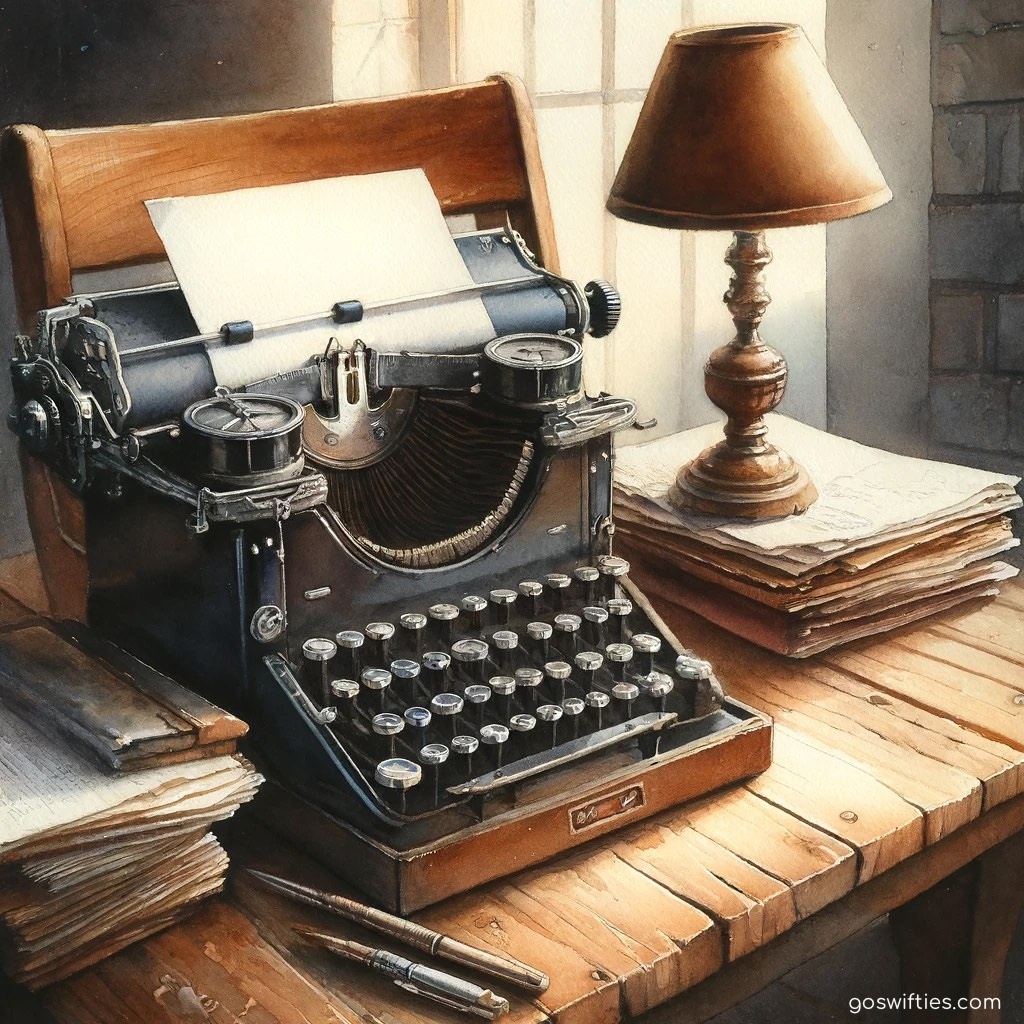Come over at GoSwifties.com
The typewriter, a significant milestone in the history of technology, revolutionised written communication and shaped various aspects of human endeavours. From its humble beginnings in the 18th century to its widespread adoption in the 19th and 20th centuries, the typewriter has left a lasting impact on the world of science, arts, economy, and beyond.
Historical Overview.
The journey of the typewriter began with the earliest patent filed by Henry Mill in 1714, although it was never manufactured. It wasn’t until the mid-19th century that tangible advancements were made with the creation of a machine by Christopher Latham Sholes, Carlos Glidden, and Samuel Soule. Their “Remington No. 1,” introduced in 1874, became the first commercially successful model, featuring the now-ubiquitous QWERTY keyboard layout.
Technical Innovations.
Mechanical Advancements.
Early typewriters evolved rapidly, from mechanical typebars to the introduction of the shift key for switching between uppercase and lowercase letters. The introduction of electric typewriters in the 20th century, like the IBM Selectric series, provided greater typing speed and efficiency with a typeball mechanism instead of individual typebars.
Standardisation And Layouts.
The adoption of the QWERTY keyboard layout in the late 19th century was a pivotal moment. Despite its inefficiencies, it became the standard due to widespread adoption in typewriters and later in computers.
Impact On Society.
Sciences.
Scientific Documentation.
The typewriter made it easier for scientists to document and share their research findings, facilitating collaboration and dissemination of knowledge.
Patent Offices.
Typed documents became the norm for patent applications, streamlining the patent filing process.
Arts.
Literary Creation.
Writers like Mark Twain embraced the typewriter, using it to produce literary works with speed and clarity. The typewriter allowed authors to focus on the content rather than the mechanics of writing.
Scriptwriting And Journalism.
The typewriter became indispensable for journalists and screenwriters, enabling rapid production of articles and scripts.
Economy.
Office Efficiency.
The typewriter transformed office work, giving rise to the modern clerical workforce. It enabled businesses to handle correspondence and documentation more efficiently.
New Job Opportunities.
The demand for typists created new employment opportunities, particularly for women, who were entering the workforce in larger numbers.
Social And Cultural Impact.
Literacy And Education.
The typewriter became a tool in education, helping improve literacy and writing skills.
Women’s Empowerment.
Typist roles were often filled by women, marking a significant step in gender equality in the workplace.
Legacy And Evolution.
Despite the decline in typewriter use with the advent of personal computers in the 1980s, the typewriter’s legacy lives on in modern keyboards and the concept of efficient written communication. The resurgence of interest in mechanical keyboards and the preservation of vintage typewriters underscore their enduring appeal.
The typewriter stands as a testament to human ingenuity, having reshaped industries and communication. Its impact on the sciences, arts, economy, and society continues to be felt, even in the digital age.
Did You Know?
1. First Novel Typed. Mark Twain is often credited as the first author to submit a typed manuscript to a publisher. He used a Remington typewriter to produce the manuscript for his novel “Life on the Mississippi” in 1883.
2. Longest Word Typed on One Row. “Typewriter” is the longest English word that can be typed using only the top row of a QWERTY keyboard.
3. Initial Rejection. When Christopher Latham Sholes developed the typewriter, he couldn’t find an investor and reportedly sold the rights to the Remington company for only $12,000.
4. Unusual Symbols. Early typewriters didn’t have a “1” key, as the lowercase “l” was used instead. Also, many didn’t include a separate key for “0,” using the uppercase “O” instead.
5. Typewriter Art. The typewriter gave rise to a unique form of art known as “typewriter art,” where artists create intricate images using the letters and symbols on a typewriter.
6. Typing Contests. In the late 19th and early 20th centuries, speed-typing contests were popular, with champions recognised for their remarkable typing speed and accuracy.
7. Typewriter Eraser. Before correction fluid was popular, the “typewriter eraser,” a circular rubber eraser with a brush, was used to correct mistakes.
8. Symbol Of Rebellion. During the Soviet era, typewriters were often associated with dissidents. They allowed individuals to produce underground publications (samizdat) that circumvented government censorship.
Originally published at: GoSwifties.com





